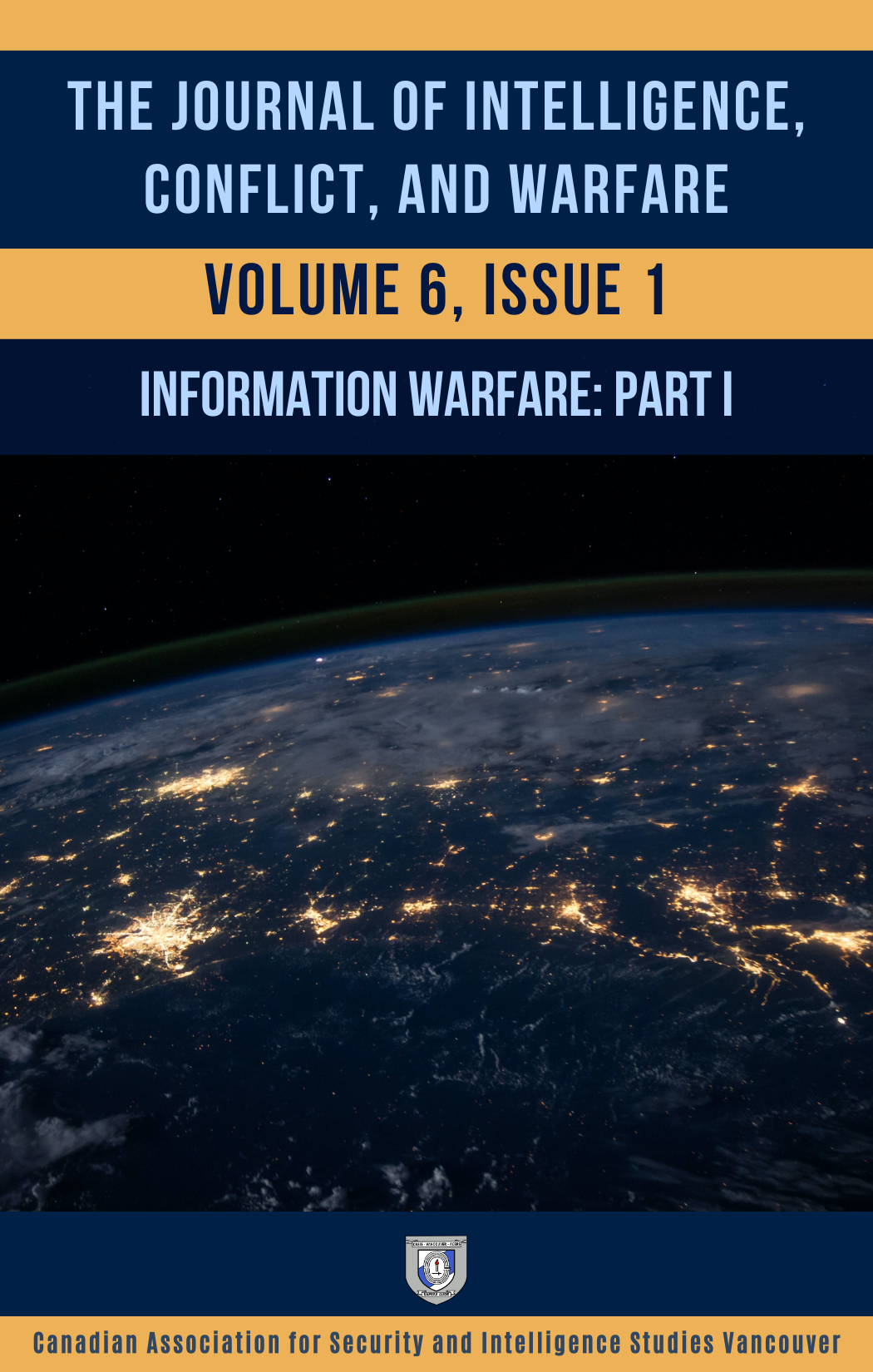Vol. 6 No. 1 (2023)
We are in the midst of an era of information warfare. With disinformation and misinformation already impacting Canadian national security, information integrity has become essential for ensuring the safety and security of democratic states. Given that only 20% of the world remains democratically free (Freedom House 2022) and authoritarianism is increasingly the norm, it is imperative that information integrity and data discipline becomes a priority for those who work in the defense and security space. The human infrastructure of our countries is impacted in this sphere, not by bombs but by misinformation which aims to shatter the cohesion of our plural societies.
This evolving threat landscape requires the national security community to understand and identify the invisible insecurities that we face on an everyday basis. We are prepared as a society to face foes which are kinetic—we are less prepared to address non-kinetic, online conflict in our online neighborhood hangouts and our online social space. This type of soft violence as information warfare is not widely understood as being the danger that it is. We consequently experience significant challenges to addressing the threat of information warfare, sharp power, and soft violence. The next two issues of the Journal of Intelligence, Conflict, and Warfare seek to critically examine this new domain of operations and assess current and future strategies for mitigating the impact of information warfare on the security and integrity of our democracies.
The articles and briefings included in this new issue of the Journal of Intelligence, Conflict, and Warfare explore several areas of the current global environment, with a keen eye towards the past, present, and future threat landscape and innovative strategies to mitigate impacts. The topics range from the national to international, addressing issues of ideology, technology, borders, and innovation, exposing the interconnected nature therein. These articles and briefings reflect different areas of concern, but together they demonstrate the power of critical reasoning, rigorous research, and solutions-oriented thinking. This issue is also a reminder that understanding a specific security threat often depends on how well we understand a specific group or movement’s formation, evolution, leadership patterns, and culture; that Violent Transnational Social Movements (VTSMs) must be tracked; and the importance of a shifting information and intelligence landscape. As the scholarly debate about critical security issues continues to unfold, the Editorial board and I hope these critical explorations of security threats carry the discussion forward.
JICW Editor-in-Chief
Candyce Kelshall
